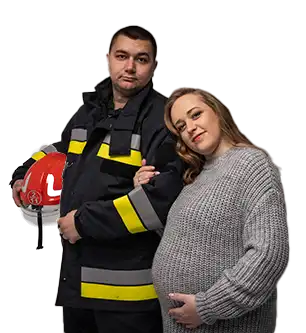
The CDC Stresses Firefighters Use Protective Equipment When Training With AFFF Firefighting Foam
No type of PPE can reverse the damage to their health that may have already occurred
Wednesday, June 28, 2023 - It is no coincidence that cancer is the leading cause of death among the nation's firefighters. That may surprise many as firefighters usually seem as healthy and fit as can be. One would suspect that death due to injuries that occur on the job would be more prevalent than cancer; however, we need to look no further than a firefighter's use of and training with toxic AFFF firefighting foam to provide the cancer connection. " Cancer is a leading cause of death among firefighters, and research suggests firefighters are at higher risk of certain types of cancers when compared to the general population," according to CDC.gov. FireFighterCloseCalls.com tells readers that they fear that the risks of a firefighter developing cancer have been overblown; however, the risks are not insignificant. " Firefighters have a 9 percent higher risk of being diagnosed with cancer and a 14 percent higher risk of dying from cancer than the general U.S. population, according to the NIOSH study results. The cancers mostly responsible for the higher risk were respiratory (lung, mesothelioma), GI (oral cavity, esophageal, large intestine), and kidney.
In addition to getting AFFF firefighting foam cancer, firefighters may be exposed to benzene, formaldehyde, burning materials, and asbestos in older buildings. Asbestos inhalation may be one of the most deadly problems as asbestos remediation in older buildings usually consists of adding a layer of drywall over the asbestos so as not to disturb it and cause it to become airborne. Asbestos is released into the air, where a firefighter can inhale it during a fire and the destruction of a building. Most federal, state, and municipal government buildings have asbestos lurking behind their walls and ceilings. Firefighters are urged to wear full protective gear and respirators to protect themselves from toxins released during a fire. The CDC warns, however, " Reusing dirty turnout gear or respiratory protection can also result in exposures to hazardous substances. These exposures can occur by skin contact with contaminated personal protective equipment (PPE) or by breathing in or ingesting particles from contaminated PPE." They also must decontaminate their gear thoroughly after each use so as not to cross-contaminate their vehicles and fire station. Most chemicals are deadly or at least toxic when inhaled, but getting them on the skin can also cause irritation and may lead to cancer. The CDC urges firefighting stations to adopt education programs to ensure firefighters exercise due caution. Their training should center around how and why to use the PPE that they are issued and the consequences of not doing so.
About 300,000 individuals were employed as firefighters in the country based on information from the U.S. Bureau of Labor Statistics (BLS) for May 2020. That number could double if firefighters in the military are included in the count. Firefighting stations have been polluted as firefighters trained with AFFF firefighting foam made by 3M DuPont and about a dozen other companies. Deadly PFAS chemicals have undoubtedly bioaccumulated on the tarmac and in the soil and also polluted the groundwater at the station. Thousands of firefighters may have developed AFFF firefighting foam cancer from regularly coming into contact with firefighting foam while training, and no amount of PPE can reverse the damage to their health that has already occurred.
 OnderLaw, LLC and The Overholt Law Firm, PC -
OnderLaw, LLC and The Overholt Law Firm, PC -